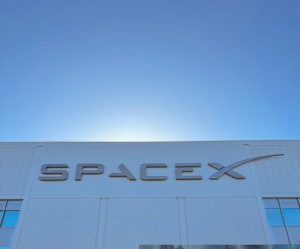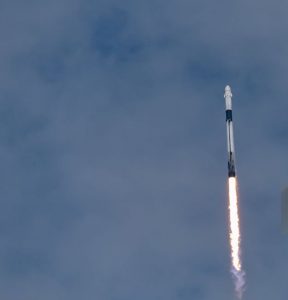SpaceX Launch Schedule and Public Review
 SpaceX has rapidly become one of the most recognized names in space exploration. Its ambitious plans, such as the Starship program and the ongoing success of its Falcon 9 rockets, keep the public engaged. The most crucial aspect of the company’s operations is its launch schedule. The timing of these missions has a direct impact on the success of SpaceX’s various space endeavors. Alongside this, public review plays a pivotal role in shaping the company’s reputation and the general perception of its work.
SpaceX has rapidly become one of the most recognized names in space exploration. Its ambitious plans, such as the Starship program and the ongoing success of its Falcon 9 rockets, keep the public engaged. The most crucial aspect of the company’s operations is its launch schedule. The timing of these missions has a direct impact on the success of SpaceX’s various space endeavors. Alongside this, public review plays a pivotal role in shaping the company’s reputation and the general perception of its work.
Planning the SpaceX launch schedule
SpaceX launch schedule is the result of careful planning and coordination. It involves multiple factors, such as weather, spacecraft readiness, and regulatory approval. Each mission, whether carrying cargo or astronauts, requires precise timing and logistical organization. SpaceX’s team carefully monitors every element to ensure that each launch goes off without a hitch.
The company typically announces its launch schedule well in advance to give the public and industry professionals time to prepare. For major missions, such as crewed flights to the International space station, the launch schedule is often set months or even years ahead. However, unexpected factors can sometimes cause delays, affecting the timing of future launches.
Weather and launch windows
Weather plays an important role in determining the exact time and date of SpaceX launches. The conditions in which a rocket is launched must be optimal. The company’s launch teams keep a close eye on wind speeds, cloud cover, and the risk of thunderstorms. If conditions are not favorable, launches are delayed until the weather improves.
Weather windows for space launches are often narrow. These windows are determined by the rocket’s trajectory and the specific orbit it needs to reach. Any slight deviation in timing can result in the mission missing its intended target. This is why SpaceX places so much emphasis on weather forecasts and prepares backup options for delayed launches.
Spacecraft and rocket readiness
Every SpaceX launch depends on the readiness of the spacecraft and rocket. SpaceX’s reusable rockets, particularly the Falcon 9, require extensive checks after every launch. These rockets are inspected, refurbished, and tested thoroughly to ensure they are ready for their next mission.
The readiness of the spacecraft, like the Dragon capsule, is equally important. Cargo missions require the spacecraft to be loaded with goods and checked for secure packaging. For crewed missions, additional safety measures and extensive crew training are critical components of the pre-launch checklist.
SpaceX’s commitment to reusability is a game-changer. By refurbishing rockets and spacecraft after every flight, the company saves time and resources. This approach allows SpaceX to schedule frequent launches, reducing the cost of space exploration.
Coordination with regulatory agencies
Before each launch, SpaceX must obtain approvals from various regulatory agencies, such as the Federal Aviation Administration (FAA). These agencies ensure that each mission adheres to safety protocols and guidelines. This includes reviewing flight paths, safety zones, and the risk of debris falling to Earth during a launch.
SpaceX must also meet requirements set by the Federal Communications Commission (FCC) when deploying satellites. These regulations are necessary to prevent interference with other satellite systems and ensure that SpaceX’s missions do not disrupt communication networks. Meeting these regulatory standards is a key factor in determining the timing of a launch.
Public review and transparency
Public review plays a significant role in SpaceX’s operations, particularly in terms of transparency. With the growing interest in space exploration, SpaceX regularly updates the public on its launch schedule. This keeps space enthusiasts, investors, and the general public informed about upcoming missions.
SpaceX often broadcasts its launches live, providing detailed commentary on the mission and its objectives. This transparency allows the public to feel involved and invested in the company’s work. Through social media, blog posts, and press releases, SpaceX offers regular updates and insights into its mission schedules, helping to foster a deeper connection with its audience.
The public’s involvement in SpaceX’s mission success goes beyond watching launches. Through their feedback, whether via social media or community forums, SpaceX gathers valuable input that helps improve its operations. Public review provides an avenue for dialogue, ensuring that the company stays engaged with its supporters.
Managing multiple launches
SpaceX regularly schedules multiple launches within short time frames. These launches often involve different payloads, such as commercial satellites, cargo for the ISS, or crewed missions. Managing multiple launches requires careful coordination to ensure that there are no conflicts in timing or resources.
SpaceX utilizes several launch sites across the United States, including the Kennedy Space Center, Cape Canaveral, and Vandenberg Space Force Base. The availability of these sites is a crucial factor in the scheduling process. When multiple rockets need to launch from the same site, timing must be adjusted to ensure that the launch pads and facilities are not overbooked.
By maintaining a steady launch cadence, SpaceX aims to streamline operations and meet the increasing demand for space missions. Whether sending crew to the ISS or deploying Starlink satellites, SpaceX schedules missions with efficiency and flexibility in mind.
Delays and rescheduling
Although SpaceX has become known for its reliable launch schedule, delays do occasionally occur. These delays are often due to weather conditions, technical issues, or the need for additional safety checks. When a delay happens, SpaceX reschedules the mission to the next available window.
For instance, if the weather forecast predicts high winds or lightning during a scheduled launch, the company will push back the mission. Safety is a top priority for SpaceX, so every precaution is taken to ensure that the rocket can launch under optimal conditions. Even minor issues in spacecraft readiness can result in delays, as SpaceX ensures that every component is working perfectly.
The ability to adapt quickly and reschedule missions efficiently is part of SpaceX’s strategy for maintaining a high launch cadence. By leveraging its flexible approach to scheduling, the company can recover from delays and minimize disruption to its overall timeline.
SpaceX’s impact on space exploration
SpaceX’s launch schedule has revolutionized space exploration. By achieving rapid turnaround times for rockets and maintaining a high launch cadence, SpaceX has dramatically reduced the cost of sending payloads into space. This success has paved the way for other private companies to enter the space industry and has accelerated innovation in the field.
SpaceX’s work has also played a pivotal role in NASA’s missions. The company’s partnerships with NASA, such as the Crew Dragon mission to the ISS, have opened new possibilities for crewed missions to deep space. SpaceX’s reliable and cost-effective approach to space travel has reshaped the future of space exploration, making it more accessible to a broader range of organisations.
Public’s role in shaping SpaceX’s launch schedule
Public interest and review of SpaceX’s launch schedule play a role in shaping the company’s priorities. SpaceX listens to the feedback it receives from the public, whether it’s positive or critical. This feedback can impact the timing of future launches, particularly when concerns about safety, environmental impact, or logistical issues arise.
SpaceX also benefits from public enthusiasm, which helps generate excitement around upcoming missions. The company’s ability to engage with the public fosters a sense of community around space exploration. This collective enthusiasm drives momentum, encouraging further advancements in space technology.
Innovation in launch scheduling
As SpaceX continues to develop its fleet of rockets, the company is innovating new ways to streamline its launch schedule. The development of the Starship program represents a significant leap forward. Starship will be capable of carrying far larger payloads and crews than current rockets, which will increase SpaceX’s capacity for missions.
The rapid development of reusable rockets is another innovation that supports SpaceX’s ambitious launch schedule. By reusing the Falcon 9 rockets, SpaceX reduces costs and shortens the time between launches. This capability will be key in meeting the demand for future missions, including potential crewed missions to Mars.
Global impact of SpaceX launches
SpaceX’s launch schedule extends far beyond national borders. The company has become a key player in the global satellite industry. Through its Starlink program, SpaceX is deploying thousands of small satellites into low Earth orbit. These satellites are designed to provide global internet coverage, particularly in remote and underserved regions.
SpaceX’s launches also support international space exploration initiatives. By launching payloads for various governments, private companies, and organizations, SpaceX has contributed to the advancement of global space infrastructure. The company’s ability to schedule regular, cost-effective launches has accelerated the pace of space exploration, benefiting countries and organisations worldwide.
Future of SpaceX launch scheduling
SpaceX’s launch schedule will only grow more complex as the company expands its operations. With plans for missions to the Moon and Mars, the timing of launches will need to accommodate more demanding objectives. New spacecraft, such as Starship, will further increase the company’s ability to undertake ambitious missions, including colonization efforts on other planets.
The increasing frequency of SpaceX missions will also require enhanced coordination with international partners and regulatory bodies. As the space industry becomes more crowded, managing launch schedules efficiently will be crucial to ensuring that each mission can proceed without interference.










